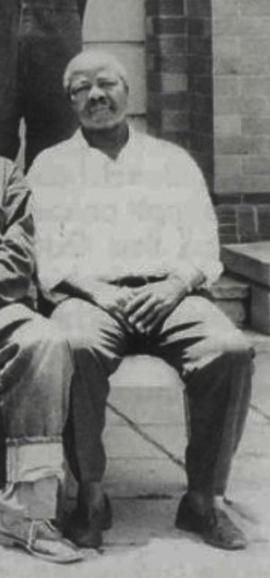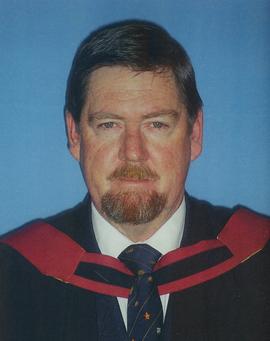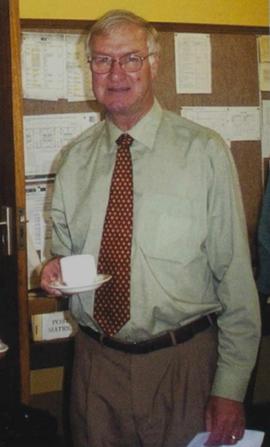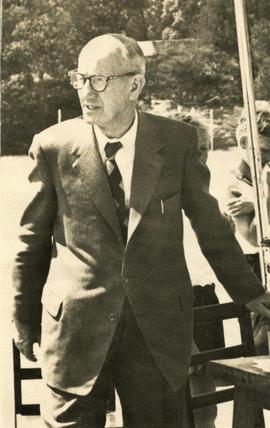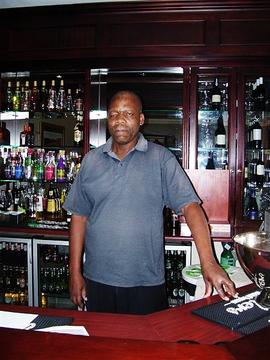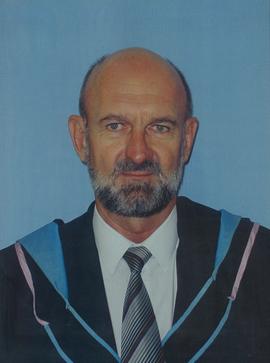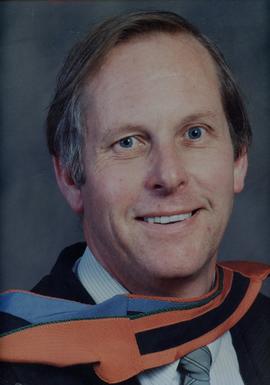Wally Mears, the man
The son of devout Methodist missionaries, Mears was born in 1890 and educated in mission schools – mostly in the Eastern Cape – where his parents served. He attended Kingswood College and Rhodes University before going on to read Modern History and later Psychology at Cambridge University. After WWII he was awarded an honorary Masters in Education degree by UCT. He distinguished himself in the academic sphere as well as playing rugby. In 1911, at 21 years of age Mears completed an epic 1000km trip on horseback from Grahamstown to Ixopo. (His account of this trip is held by the archives of Rondebosch Boys’ High School who kindly shared a copy with our St Stithians Archive. His account can be accessed here.)
Mears entered the teaching profession and taught at Kingswood, Pretoria BHS and Germiston High before being appointed in 1930 as Headmaster to Rondebosch Boys’ School in Cape Town where he guided the development of this renowned institution for over 20 years. His service to Rondebosch is commemorated in the Mears Centre and the Mears Meadows playing fields and he is remembered with affection by many of their alumni. Mears was a strong believer in mankind being able to fill its destiny only in service to others and in the inalienable right of all men to be judged on their own merit alone, irrespective of race, creed or colour. Having grown up in the Transkei, both Wally Mears and his wife, Nan, were fluent isiXhosa speakers and volunteered much of their time to rural community upliftment.
Mears inculcated lasting values in both Rondebosch and St Stithians: their alumni have served their country and fellow men accordingly through the impact that their school years had on their lives.
Wally Mears and the early development years of St Stithians 1950-1952
St Stithians College opened its doors to Foundation pupils in January 1953, but the idea of an independent Methodist school for boys in the Johannesburg area had been planted much earlier. Following the generous bequests of Collins and Mountstephens, the St Stithians Trust was established in 1941 and the Driefontein farm property was purchased in the same year. World War II delayed the immediate construction of the College, but discussions and planning continued and the architect, C.M. Paynter presented his first plans in 1947. However, in 1950 Paynter pointed out that only a schoolmaster could determine the size of a workable school and that he had already consulted with Mr W.G.A. (Wally) Mears who at that time was still the headmaster of Rondebosch.
Mears was brought up from Cape Town in January 1951 together with his wife, Nan. They inspected the property and from discussions Mears understood that, although a College for both boy and girls was envisaged, the Trustees favoured a boy’s boarding school similar to Kingswood in Grahamstown as a starting point. Following his visit, Mears submitted a report recommending that with the steeply rising building costs of those post-war years three modified schemes were possible: a preparatory school, a secondary school for boys or a secondary school for girls. Mears favoured a secondary school as it would do more “to establish a liberal Methodist tradition” and would inevitably later require its own preparatory school. It was Mears who indicated the location of the Boys’ College buildings on the Campus and recommended the position of the Girls’ College which was eventually constructed some 40 years later.
One error of judgement on the part of Mears that has adversely influenced the development and use of the BC and BP buildings was the limitation of classroom sizes to accommodate only 15-25 students. (This limitation was eventually overcome when new technologies facilitated the rebuilding of the BC main classroom block in 2018!) A second planning error was the placement of the unsightly boys’ cloakroom block in the centre of the Chapel Quad, which despite decades of discussion remains as firmly planted as its neighbouring camphor tree.
Mears recommended the building of the Chapel rather than a school hall. The Trustees – all appointed through their links as fellow Methodists – were delighted and reassured by this recommendation. Mears’s founding principle underlies the College to this day: The Church must show the value it places on Christian teaching.
Towards the end of 1951 the Trust became aware that Mears would be retiring as headmaster of Rondebosch and immediately offered him the post of founding headmaster of St Stithians. Mears accepted and took up his post in February 1952 in order to plan in detail the opening of the College.
Wally Mears and the Foundation years 1953-1961
Mears deferred his retirement to serve as St Stithians’ founding head from 1953 to 1961. His aim was to get a new school into top gear in as short a time as possible which he achieved, as described in the words of his successor, Steyn Krige, through “faith, inspiration, sacrifice, wise guidance and restraint and without becoming a financial burden to anyone. St Stithians itself is a memorial to Wally Mears, not through its bricks and mortar, but a memorial to the countless young lives imbued with the idea of making the world a better place for others. His ideals of selflessness; of justice and fair play towards all men; of honesty and integrity; of the sanctity of human life; and of service to all those in need of help were the foundation values on which the College is built.” Founder pupils remember fondly Mr Mears’s “Old Man’s Midnight Passage Drill” and his inimitable laugh.
Monty Harris, the College’s first Maths teacher described, in a letter to his sister, the opening days of the College in the following words:
January 31st:
“Yes, St Stithians has been “alive” for four days and it would not be far out to say that I, too, have been alive for the same period. I think my best plan is to give you chapter and verse since last Saturday. Sunday and Monday were clear but on Tuesday Mr Mears called for me at 9a.m. and we proceeded to the house of Mr Tucker (he is an accountant and one of Council of the College) to pick up one desk and a load of books. From there to Ferndale where we picked up the two lady members of the staff and thence the short journey to the school. The morning was spent in checking books etc. and in the afternoon the boarders began to arrive. The boys are not a little proud of the fact that they will always be known as founder pupils. Wednesday was the great day. We were on the job about 7.20 a.m. ready for the influx of little nippers who do not live in. This is my first experience of classes for the “fives” and I have never seen so many small boys crying at the same time.”
Walter Macfarlane, the first BP headmaster describes in his history of the school how “the first scholars enjoyed both the advantages and disadvantages of being founder members of the College. The grade 8s and 9s in particular enjoyed the unique family atmosphere and were able to formulate the ethos which in due course would permeate the school and give it a very special atmosphere”. Mears described in his Early History of St Stithians how the majority of the first boys were “boys of good quality from good homes with parents interested in their children and ready to be interested in their son’s school”. Parents were actively interested in the school from the beginning and a Parents’ Association was established very early on and their contribution cannot be overestimated to this day.
Mears was a light sleeper and the first groundsman, Lindsay Baytopp, reported hearing Mears marching through the grounds early in the morning singing the hymn “Onward Christian Soldiers”.
Wally Mears was an inveterate tree planter and his efforts are visible for all to enjoy today. Both Wally and his wife, Nan, were keen horticulturalists and had their hands full with generous donations of plants and trees. Not surprisingly, digging holes for trees became a constructive form of punishment. Wally Mears kept boys busy gathering up the remnants of building materials, planting grass, felling dead trees and collecting logs whilst Nan Mears supervised the planting of trees in her inimitable manner: “You must always plant two trees close together: one for us and one for God”.
The custom of yearly tree planting ceremonies by the Matrics and grade sevens thus began in Mears’s time. It is fitting to remember that trees are not necessarily planted for ourselves but for those who come after us.
Harris provides in his letters a delightful description of Mears:
“I am lucky, too, in my work and in the fact that St Stithians is in the capable hands of such a man as Mr Mears. It is difficult and quite unfair of anyone to try to describe the character of another, but I should like you to imagine a man, aged 62, a little taller than me, greying, yet full of energy, somewhat absent-minded at times, ever conscious of what is right and wrong. An infectious, high-pitched laugh, a deceptively easy-going manner which is proof against the most indulgent parents, and a ready wit never directed hurtfully. A man whose conversation discloses a deep knowledge of human nature, yet whose ordinary conversation is liberally interspersed with ‘what’s his name, a total abstainer and a non-smoker, yet not a bigot on this matter, a passionate lover of animals, with a deep knowledge of the ways of that very human animal, the boy. Add to this the fact that Wally is very practical, many of his ideas are incorporated in the school buildings, and you have a picture, possibly imperfect, of a man chosen to guide St Stithians through its teething troubles.”
Mrs Nan Mears was a devoted partner and stalwart of the early years of the College. In its founding years she served as matron, cook, supervisor to the gardeners and mother to the boarders, nursing the sick and comforting the homesick. She is remembered fondly by founder pupils as well as by the estate staff with whom she communicated in fluent isiXhosa. Sadly, Nan passed away in 1959, two years before Wally’s retirement from St Stithians. Her contribution is commemorated in the Nan Mears Chair in the Chapel, funded mostly by donations from the boys. A memorial service for Mrs Mears was held in the Chapel in February 1959 and conducted by the first chaplain, the Rev Vivian Harris.
Although Mears was initially contracted for a 5-year period, he remained at the College until 1961. By the time he retired, there were 376 scholars (182 in the BP, 194 in the BC) and 23 staff members, the new Science Block (now the Life Sciences block) on the southern side of the Chapel Quad had been opened, the first swimming pool had been built and the boys were able to enjoy extensive playing fields and tennis courts.
Mears Hall was named in honour of the first headmaster and he was the guest of honour at the official opening in 1964. Wally passed away during the Christmas holidays in 1976 and in February a memorial service was held in the Chapel. The Headmaster and some alumni read the lessons and paid tribute to Mr. Mears, the address being delivered by the Rev. Vivian Harris. This was a moment of memories and also of glad thanksgiving for the life of a great man who did so much to establish our school and give it a firm foundation.

